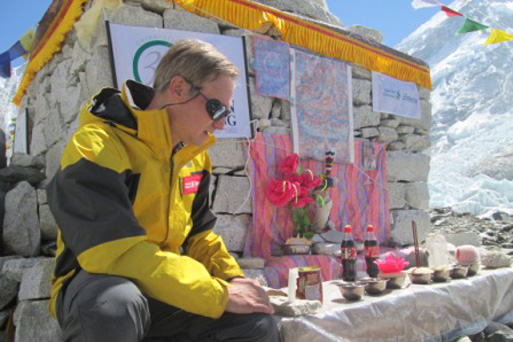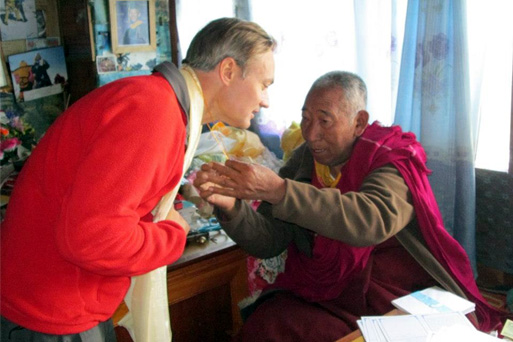It's impossible to stand in the shadow of Mount Everest without feeling a sense of trepidation. The mountain is ancient, immense, and far beyond the whims of man. When you're on its slopes, you're completely at its mercy.
Everest is nature at its most powerful. Storms rage across its summit, and avalanches can strike without warning just hundreds of metres from Base Camp. No matter what your spiritual leanings are, you would be unwise to climb it without a blessing, and so the Everest Puja – or blessing ceremony - is a prerequisite for any expedition to the roof of the world.

After all, Everest's name in Tibetan, Chomolungma, means "Mother Goddess of the Earth", and the people of Nepal and Tibet have long believed that Miyolangsangma, the Buddhist goddess of Inexhaustible Giving, lives atop the mountain. Mountaineers are not permitted to even set foot on the soil of Everest until the Puja is complete.
Blessing the Expedition
The climbers gather around a stupa built of stones, with colourful prayer flags hanging from it in every direction. The Lama officiating the ceremony leads chants and prayers, asking the gods for permission to climb, forgiveness for trespassing on the mountain’s holy ground, and for safe passage for the expedition.

Throughout the ceremony, juniper leaf is burnt in the altar as a symbol of protection, and any critical climbing equipment that will damage the mountain - boots, ice-axes, and crampons – are laid against the stupa for special blessings. Food and drink are given as offerings: traditional tsampa flour cake, yak milk butter, fried dough, fruit, chocolates, and drinks. However, anything given to the gods must be pure, and so if a dark-coloured drink like Coca-Cola is used, it needs to have a bit of white placed atop its bottlecap. And it’s not just soft drinks - in a unique Everest tradition, beer and rum are also offered up to the gods as part of the ceremony.
The Puja closes with the climbers and sherpas smearing gray tsampa flour on each others' faces, symbolizing that they hope to live long enough to see each other when they’re old and grey. Finally, the food and beer that was offered to the gods makes its way into the hands of the mortals, and climbers and sherpas alike gather for a night of celebration before they step into the unknown.
